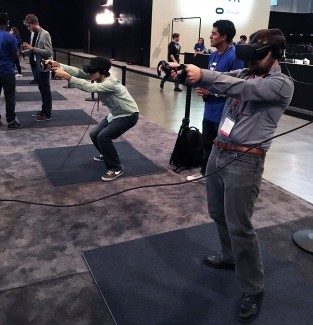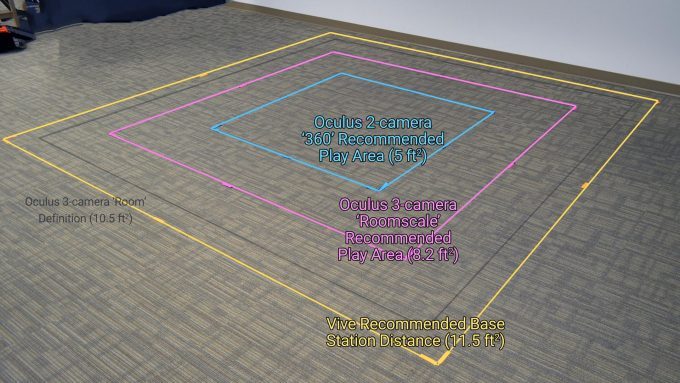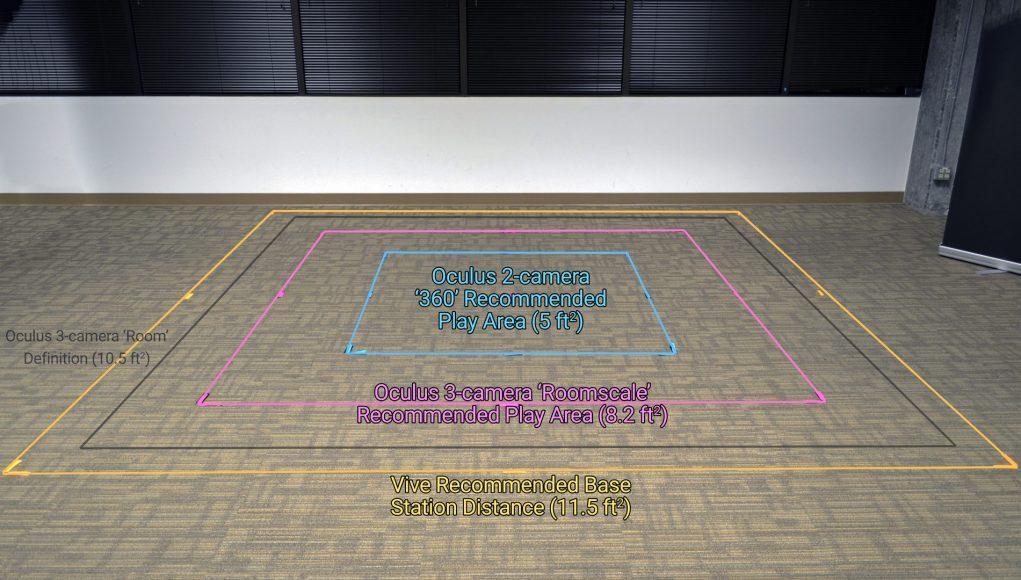Ahead of the launch of Oculus Touch, the company has finally detailed its ‘experimental’ camera arrangements for 360 degree and ‘roomscale’ tracking, allowing us to take a look at how those tracking volumes compare with the HTC Vive.

The Vive was the first consumer VR headset out the door with ‘roomscale’ tracking, giving players the ability to stride across a roughly room-sized space while partaking in a VR experience with motion controllers. Though Oculus was at once focused only on front-facing (180 degree) ‘standing’ experiences, the company finally announced back in October that they would in fact support both roomscale and 360 degree standing VR through two different camera orientations.
For roomscale, the company recommends three cameras (which means you’d need to buy one additional), two up front like the normal front-facing setup, and one in either of the rear corners of the play area. For 360 degree standing, they recommended two relatively close cameras at opposite corners. The company published a setup guide for each, including the specific dimensions of the play area that’s possible with both layouts. It should be noted that Oculus is still calling these camera configurations “experimental”.
Oculus Touch vs. HTC Vive Roomscale Dimensions
We laid out the play area dimensions of both recommended configurations to get a sense of how they compared with the HTC Vive’s larger roomscale tracking area.

All of the data here comes from official documentation. The HTC Vive setup guide recommends base stations are placed up to 16.3 ft diagonally, which makes a square play area that’s 11.5 ft on each side. You can see it in above in yellow.
In the 3-camera roomscale setup guide, Oculus defined a ‘room’ as being 10.5 ft on all sides (14.6 ft diagonally), which you can see above in grey. The actual play area within that room is 8.2 ft on all sides and 11.6 ft diagonally, above in pink.
For the 2-camera 360 standing setup, with two cameras placed in opposite corners just beyond the play area, the play area is 5 ft on each side and 7 ft diagonally, above in blue.
How well will Touch work within these volumes, and to what extent can the boundaries be pushed? With Touch launching this week, we’ll be able to answer those questions soon.







